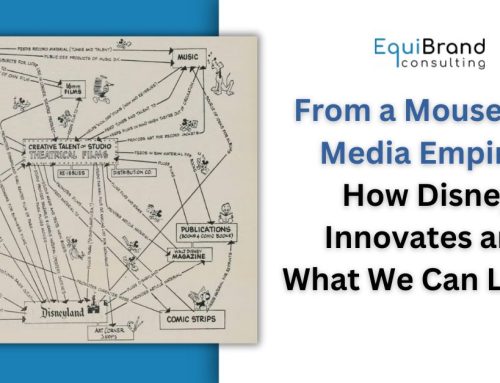 A brand positioning statement is a concise internal description of what you want your brand to stand for in the minds of your target. Once developed, the brand marketing positioning statement should serve to inform key decisions made regarding your brands, such as brand name, selling messages, marketing materials, channel/media allocation, and much more.
A brand positioning statement is a concise internal description of what you want your brand to stand for in the minds of your target. Once developed, the brand marketing positioning statement should serve to inform key decisions made regarding your brands, such as brand name, selling messages, marketing materials, channel/media allocation, and much more.
Is your marketing “great”? A brand positioning statement is one of your measuring sticks.
Without a positioning statement, it is nearly impossible for you to evaluate the effectiveness of your marketing materials. Attempting to measure the merits of creative work through the lens of what you are trying to achieve can only happen if you understand what you are trying to achieve. Just because your agency, your marketing team, key stakeholders, or customers “like” your marketing does not mean the creative will be an effective in-market.
Typically, a brand positioning statement is structured like this:
To (target audience) Product X is the only (frame of reference) that (benefits delivered) because (reasons to believe)
Some brand positioning example statements (derived from marketing materials):
- For local and international travelers, Airbnb is the only booking website that connects you to unique experiences all over the world because we offer the largest selection, most diverse, top-rated, and personalized places to stay.
- For every-day-women, Dove is the only personal care product that helps develop a positive relationship with the way you look because we create products that deliver real results and are trusted by more women.
- For patients suffering regularly from Acid Reflux, Nexium is the only prescription or OTC acid reflux medication that heals your acid reflux because it has the most powerful mechanism of action.
Here are some other brand positioning example statements.
In learning how to create a brand positioning statement, let’s dissect the elements of the statement.
Category frame of reference: What is the competitive context? This is the competitive set with whom you compete. If you are marketing a prescription medication, is your competitive set other prescription drugs or is it broader, including over-the-counter alternatives? Defining your frame of reference is important because you can’t attempt to differentiate a brand in the minds of consumers without first understanding the relevant alternatives.
Definition of the target market(s): A good brand position by definition cannot be all things to all people. Who is the brand being built for (i.e. the center of the targeting bulls-eye)? Many people may buy or interact with your product, but who is your most important customer segment?
Statement of the key point of difference: What benefits should the brand stand for and deliver on? These may range from emotional benefits (ie., how the product makes you feel) or functional benefits (i.e, what the product does).
Reason(s) to believe: Giving consumers clear reasons to believe your point of differentiation is vital to delivering on your brand point of difference. One approach to generating reasons to believe is to begin with the functional benefits of what makes your product or service stand apart. For example, Airbnb may have the most listings among travel sites which can serve as a reason to believe the end benefit of discovering the most unique travel experiences.
What is the process?
Although your positioning statement is just a few sentences, the process to develop one can be complex, involving qualitative research, quantitative research, and internal stakeholder reviews.
Internal stakeholder buy-in is vital. If key stakeholders are not properly involved in the process, the adoption of the results is less likely. Stakeholders need to understand the position and the rigorous process of how the position was created.
What makes a good brand positioning statement?
A strong brand positioning must meet these core objectives: relevancy, differentiation, and credibility. It’s crucial that all three positioning objectives are met at the same time. Highly relevant, though undifferentiated brands, run the risk of being commoditized. Similarly, brands that are differentiated, though not particularly relevant, become niche providers.
Your brand positioning statement is only as effective as how it is communicated.
The brand positioning statement itself is used to guide internal decision-making and external vendor activities. From CEO to salesperson, the positioning statement (or internal expressions of it, such as brand playbooks or creative briefs) should be understood by your entire organization. When asked to complete the sentence “Our Brand Is The One That… ”, the answer should be consistent.
If you have a complex positioning statement, it may be necessary to generate internal communications which provide a more focused description. Even the most sophisticated members of your marketing team may have a difficult time digesting and communicating a complex brand position to extended members in and outside the organization.
If your organization does not interpret your brand’s position with a singular mindset, how can you expect your customers to understand the expression of it in-market?
A brand positioning statement will immediately improve processes. In-market results will take longer.
One immediate and significant benefit of a brand positioning statement will be a more focused marketing organization, leading to improved decision making, better vendor management, and less organizational friction. However, the in-market impact of a clearly defined brand position won’t be realized overnight. The value of a brand positioning statement is significant, yet occurs upstream, requiring a long-term view in conception and execution.
Need assistance writing a brand positioning statement?
To win in the marketplace, brands must maximize customer relevancy and competitive differentiation. Strategic positioning provides the platform for communication strategies, plans, and creative design. A brand strategy consultant from EquiBrand can provide additional perspectives on how to create an effective strategic positioning. Contact us for more information.



















Follow EquiBrand